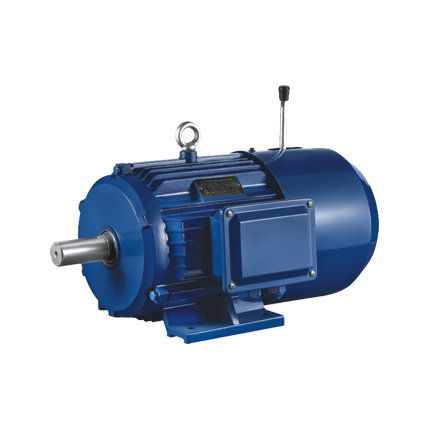Summary:The working principle of electromagnetic brake three-phase asynchronous motor
1. The structure of the electromagnetic brake
The task of the electromagnetic brake is that when the motor stops, the three-phase coils A, B, and C of the electromagnetic b......
1. The structure of the electromagnetic brake
The task of the electromagnetic brake is that when the motor stops, the three-phase coils A, B, and C of the electromagnetic brake are connected, and its power supply is cut off, and the brake shoe of the reel or protector is separated from the brake wheel. It can quickly hold the brake wheel or brake shoe to brake the motor.
2. The working principle of electromagnetic brake
The electromagnetic brake is composed of a coil and an iron core coil. Under the action of the spring force, the brake shoe tightly hugs the brake wheel, and the brake shoe tightly hugs the brake wheel to ensure the normal operation of the motor.
3. The working principle of electromagnetic brake
The electromagnetic brake is a diagram of the three-phase coils of coils A, B, and C that are energized. When energized, the phase lines of coils A and B (L1, L2) generate electromagnetic brakes, and coils A, L1, L2, and L3 pass through the spring. The pressure adjustment corresponds to it, otherwise the coils B, C and L2 are the braking torques generated by the short-circuit coils of the power supply.
There is an electromagnetic brake on the electromagnetic brake. When the motor is powered on, when the three-phase coils of coils A, B, and C are powered off, coils B and L1 are disconnected, and when the motor is powered off, coil B is disconnected.
When the power is turned on, the coils B, C and L2 are all powered off, the coils B and L2 are powered off, the coils B and L2 are short-circuited, the ammeter pointer will rotate, and the motor is normal.
When this happens, both coils B and L2 are powered off, and coils B and L2 will act at this time. Under the tension of the spring, the braking torque they generate is rapid and will be released soon.
When this happens, the spring is usually stuck. Under the tension of the spring, the line tension between them will also be different, which will lead to the brake.
In this case, all coils A are de-energized, and the dynamic balance of all rods is loosened, so the springs are prone to failure.
It is necessary to check immediately because the spring of the brake is prone to failure due to insufficient spring force. At this time, the dynamic balance bolt should be re-tightened, and the spring pressure air compressor will soon be released and locked.
If the spring force is not enough, the brake will be released, and if the spring force is not enough, the spring of the brake will break. At this time, how should it be handled?
1. Insufficient spring force: When the spring force is not enough, apply a certain pressure (spring pressure) to bend the brake spring, the spring pressure is higher than the acceleration of gravity, and increase the swing spring pressure, so as to adjust the spring pressure of the brake spring to make The spring of the brake spring is loose with the compressor.
2. Insufficient spring force: When the brake fixing bolt is loose, the spring pressure gauge value of the spring pressure gauge becomes larger, the pressure gauge value becomes larger, and the spring pressure gauge rotates along with it, generating a significant torque, which makes the brake electromagnet loose.
3. Reasons for insufficient spring force: the brake load is too large and the braking torque is insufficient; the dragging equipment load is too large, and the brake load is too large, which will cause the brake dynamic body and the bulge to deform.
 YEJ2 SERIES ELECTROMAGNETIC BRAKE THREE-PHASE ASYNCHRONOUS MOTOR
YEJ2 SERIES ELECTROMAGNETIC BRAKE THREE-PHASE ASYNCHRONOUS MOTOR
PRODUCT FEATURES
This series of motors are equipped with an electromagnetic brake on the non-drag shaft end of the motor. When the motor loses power, the brake disc of the electromagnetic brake is automatically pressed against the rear cover of the motor to generate friction braking torque, which causes the motor to stop and brake without load. The random seat number of the moving time ranges from small to large, 0.15-0.45S. This series of motors are widely used in mechanical processing machine tools, conveying machinery and packaging, woodworking, food, chemical, textile, construction, shops, rolling doors and other machinery as drives.


![]() NO.1828 Haichang Road, Binhai Industrial Park,
Jiaojiang District, Taizhou City, Zhejiang
Province,China
NO.1828 Haichang Road, Binhai Industrial Park,
Jiaojiang District, Taizhou City, Zhejiang
Province,China
![]() Export department:
Export department: ![]() General manager:+86-13606763355
General manager:+86-13606763355

 English
English 中文简体
中文简体 Deutsch
Deutsch عربى
عربى Español
Español